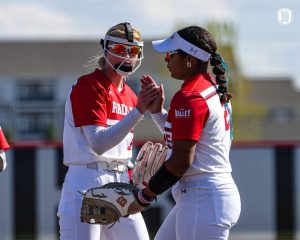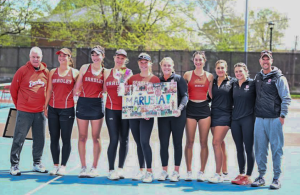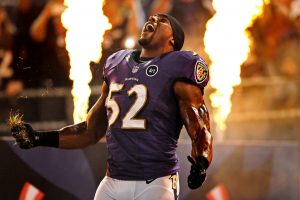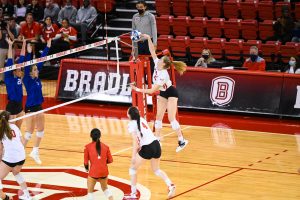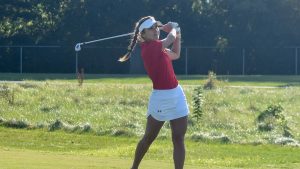The Missouri Valley Conference’s media day last week was supposed to get fans ready for basketball season. Instead, the fans were treated to MVC TV broadcaster Mark Adams making some odd and flat out wrong statements about the state of college athletics.
The luncheon started with a bit of a math error by Wichita State Head Coach Gregg Marshall, who tried to describe his team’s practice habits.
“There are times in practice where I don’t think we should be the 11th team in the Missouri Valley Conference, let alone the country,” Marshall said.
Well coach, the Missouri Valley Conference has 10 teams, not 11. So, you can never be the 11th team in the Valley. Believe me, if you could, Bradley would have found a way by now.
After Marshall’s interview, the luncheon hosted a four-person panel discussing various issues of college athletics. This is where things took a horrible turn.
It started with Adams giving Wichita State guard Fred Vanfleet $10 to signify what would happen if the NCAA began to pay athletes. Adams then proceeded to take away that money in incremental amounts. Three dollars for tax here, a few for health care there, until there was nothing left.
That isn’t how taxes work.
Assuming the tax rate is 10 percent, if you had ten dollars and were taxed you’d be down to nine. Another tax would take you down to $8.10, not $8.
Despite some of the “taxes” being at 30 percent, this demonstration did bring up a decent point. If colleges want to pay their athletes (they don’t, but they will have to in the near future), they have to figure out what to do with taxes.
Shortly after the demonstration, Adams shared his thoughts on paying athletes and, after suggesting that basketball schools should consider splitting apart from football schools, said the following about college basketball:
“We’re just going to continue to do it the right way by sending guys to class, getting their degrees, appreciating the opportunities they get and moving forward in that way with some integrity,” Adams said.
It would appear that Adams is saying college basketball is better than college football in terms of graduating athletes. Conveniently enough, the NCAA recently released their graduation data for last year. And, taken on the surface, that does in fact appear to be the case.
A four-year average of the Graduation-Success Rates (GSR) shows that men’s basketball has graduated exactly one percent more athletes than football. The study before this showed the numbers to be even, with each sport graduating 70 percent of its athletes.
Although he did not specify, it could be assumed Adams was talking about the MVC. The GSR for the 10 Valley schools ranged from 72.5 to 85.8 percent from 2003-2007, the five most recent years available on the NCAA’s website.
The Missouri Valley Football Conference (MVFC) had much lower GSRs, topping out at 61.8 percent. However, those numbers don’t tell the whole story.
If you take those same GSR numbers and remove Bradley and the other schools that do not play football, the MVC’s numbers drop by over half. The average score of 36 is actually lower than the score of the MVFC’s 37.36 in that same span.
Note that those numbers are not from different schools. Those numbers are from the five schools that are both in the MVC and the MVFC for the same five year period.
The Federal Graduation Rate (FGR) is worse. Valley schools average a 26 percent FGR, while Valley football schools average just over 33 percent.
Misleading statements aside, there is an underlying issues with the NCAA’s graduation numbers. The GSR takes into account students that have transferred and does not penalize the school for that. The FGR does not.
As such, the NCAA’s graduation rates are normally 20 points higher than the ones reported by the government.
The College Sports Research Institute (CSRI) began to look into the issue, and found men’s basketball players graduate at a 20.6 percent lower rate than full-time male students. A similar study by the same institution found that football players graduated at a gap of 13 percent.
Headlines that say athletes graduate at higher rates than the general student body are misleading, according to CSRI director Richard Southall.
“You cannot make that statement, because the Graduation Success Rate is not the same metric as is used for the general student population,” Southall said.
There are other reasons for the discrepancies as well. The NCAA groups all sports together, even though some (like tennis and golf) have shown to have higher GPAs than basketball and football.
But there is no point in reporting the numbers if the main goal of doing so is to make yourself look good. With the scandal brewing in North Carolina, does it really matter how many athletes are graduating from programs like that if the classes they are taking do not exist?
You can say 85 percent of your athletes graduated, but if they didn’t learn anything, why bother?


